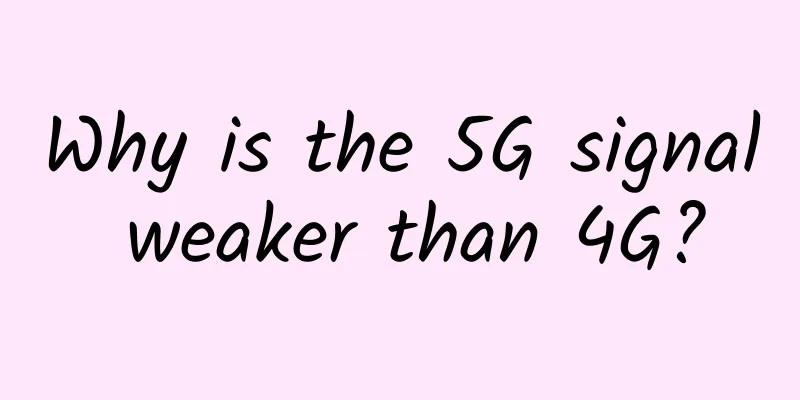Ten Limitations of MU-MIMO in WiFi

|
MIMO technology has continued to evolve since its debut more than a decade ago with the introduction of single-user mode (SU-MIMO) with the 802.11n wireless standard.
The Wi-Fi 5 (02.11ac) standard introduced optional MU-MIMO, and Wi-Fi 6 (802.11ax) supports improvements. Here are 10 ways to speed up Wi-Fi with MU-MIMO: 1. According to the Wi-Fi standard, MU-MIMO can be unidirectional or bidirectionalIt’s important to remember that, unlike SU-MIMO, MU-MIMO with Wi-Fi 5 only applies to downlink wireless connections. Only wireless routers and access points (APs) are capable of sending data to multiple users simultaneously, whether sending one or multiple data streams to each user. Wireless devices, such as smartphones, tablets, or laptops, still have to take turns sending data to the wireless router or access point (AP), although they can individually utilize SU-MIMO to send multiple data streams when it’s their turn. With the Wi-Fi 6 standard, wireless client devices can also participate in sending simultaneous streams. So multiple clients get data from a wireless access point (AP) and send it back at the same time. This includes sending acknowledgments, which may seem like a feat, but it does help speed up communications. 2. OFDMA technology complements MU-MIMOOrthogonal frequency division multiple access (OFDMA), the same technology used by LTE networks, is part of Wi-Fi 6. Technically, it basically divides the channel into smaller parts and allows multiple devices to talk at the same time, each in its own section of the channel called a resource unit (RU). While it doesn't directly increase data rates, OFDMA allows devices to coordinate more quickly when they can talk, making more efficient use of the overall channel. While OFDMA and MU-MIMO allow multiple devices to transmit simultaneously, they are very different. OFDMA can help in high-density environments with low-throughput or small-packet applications (like IoT sensors), while MU-MIMO can help in high-throughput applications. 3. Wi-Fi 6 supports more simultaneous MU-MIMO streamsWi-Fi 5 allows up to four clients in a MU-MIMO group, so an access point (AP) can only send to four devices at a time. With Wi-Fi 6, there can be up to eight clients. This should help speed up connections and increase throughput. 4.MU-MIMO and Wi-Fi 6 are available for 2.4GHz and 5GHz bandsWith Wi-Fi 6, MU-MIMO and OFDMA work on both the 2.4GHz and 5GHz bands. Earlier versions supported SU-MIMO and only supported the 5GHz band. Support for both bands is one of the biggest improvements to the crowded 2.4GHz band we've seen in years. Keep in mind that this band can only support up to three non-overlapping channels at a time, and uses smaller traditional channel widths. MU-MIMO in Wi-Fi 6 can help save this lower frequency band by speeding up speed and making it more useful in dense environments. 5. Beamforming helps steer the signalMU-MIMO uses what's called beamforming, a unique feature of Wi-Fi 5 and Wi-Fi 6 that directs the signal toward the intended wireless device instead of randomly directing it in all directions. The technology helps increase Wi-Fi range and speeds because it uses the signal more efficiently. Although 802.11n optionally offers beamforming, most vendors only implement a proprietary version of it. Having a standardized version helps with beamforming and MU-MIMO in Wi-Fi 5 and Wi-Fi 6 products. 6. User devices require multiple antennas for uplink MU-MIMOAs with Wi-Fi 5, wireless client devices do not need to have multiple antennas to receive MU-MIMO streams from an access point (AP). If the device has only one antenna, they can still receive a MU-MIMO data stream from the access point (AP). However, for uplink MU-MIMO, the wireless device needs to have at least two antennas to transmit back to the access point (AP) or wireless router via MU-MIMO, even for a single-stream connection. More antennas will allow devices to support more simultaneous data streams, typically one stream per antenna, which will benefit the device's Wi-Fi performance. However, including multiple antennas in a device requires more power and space, and increases its cost. Eight antennas are required to fully utilize Wi-Fi 6 client capabilities. 7. Traditional equipment will also benefitWhile legacy 802.11n and Wi-Fi 5 devices won’t directly see any range or performance improvements from their connections to Wi-Fi 6 APs, they can see indirect benefits. It’s important to remember that Wi-Fi is all about airtime: The faster any device is served, the more airtime other devices have. If new technologies like MU-MIMO and OFDMA can help serve supported devices faster, other devices (including legacy devices) will have more airtime. 8. MU-MIMO helps improve network capacityWhen you increase Wi-Fi speeds, you also increase network capacity. With devices being served faster, there is more airtime to serve more devices. As a result, MU-MIMO can help relieve congestion on busy or dense networks, such as Wi-Fi hotspots. 9. Support any channel widthOne way to increase Wi-Fi channel throughput is through channel bonding, which combines two adjacent channels to create a single channel that is twice as wide, effectively doubling Wi-Fi speeds. Wi-Fi 6 supports 40MHz, 80MHz, and 160MHz wide channels. So even if the network uses narrower 20MHz or 40MHz wide channels, MU-MIMO can help it run faster by serving some clients at the same time. How much faster depends on the number of devices supported on the network and the number of streams supported by each device. However, even without implementing wide channels, using MU-MIMO can more than double the downlink throughput per device. 10. Signal processing improves safetyAn interesting side effect of MU-MIMO is that the AP scrambles data before sending it over the airwaves, and only the intended receiving device can descramble it. Although tools may be developed to allow others to process the traffic, for now MU-MIMO shields the data from nearby eavesdroppers. In this way, the technology helps improve Wi-Fi security, especially on open networks such as hotspots or networks that are protected only with the personal pre-shared key mode of WPA or WPA2. With Wi-Fi 5, this scrambling is only implemented on downlink connections, as that’s the only direction MU-MIMO supports. With Wi-Fi 6, uplink connections will benefit as well. |
Recommend
Look up to the sky with 5G, keep your feet on the ground with 4G
[[348928]] October 28 news: Although 5G has alrea...
zorocloud: US CN2 GIA line VPS monthly payment starts from 34 yuan, including DDoS protection
Zorocloud is a domestic hosting company that was ...
How can you avoid anxiety when doing SaaS?
1. The harder you work, the more anxious you beco...
Huawei aims to lead its partners in a "collective transformation" from ecological cooperation to ecological synergy
[51CTO.com original article] On March 22, Huawei ...
Will RCS, which Google is pushing so hard, replace SMS? What can it do?
Google Messages uses the RCS protocol, which has ...
CMIVPS: Hong Kong VPS with 20% off monthly payment and 30% off annual payment, large bandwidth, direct connection line
CMIVPS is a Chinese hosting company founded in 20...
iWebFusion: Los Angeles VPS starting at $9.38 per month, 4GB memory package, upgradeable to 10G bandwidth
iWebFusion (or iWFHosting) is a long-established ...
iWebFusion: 10Gbps high bandwidth server starting at $149 per month, with 1Gbps unlimited traffic as an option
iWebFusion is a website of H4Y, a well-establishe...
Huawei was named "Most Innovative Company" by Brand Eins and "Best Employer" by LinkedIn in Germany.
[Düsseldorf, Germany, March 22, 2018] Huawei was ...
CheapWindowsVPS: $4.5/month KVM-4GB/60GB/1Gbps unlimited traffic/7 data centers available
The last time I shared information about CheapWin...
F5 creates “applications that are aware, controllable, and adaptable” to help enterprises achieve extraordinary digital experiences
On December 16, 2020, F5 held an online press con...
Which of the three major operators has the first chance in 5G research and development? How will life be disrupted?
[[177286]] It is reported that my country will la...
Network as a Service (NaaS) is the future trend
Network as a Service (NaaS) refers to the ability...
Interviewer: What are the common HTTP request headers?
[[401820]] This article is reprinted from the WeC...
BuyVM: 1Gbps unlimited traffic KVM starts at as low as $2/month, 256GB disk starts at only $1.25/month
BuyVM is a foreign hosting company founded in 201...









![[11.11]spinservers: $79/month - 2*E5-2630Lv3, 64G memory, 1.6TB SSD hard disk, 10Gbps bandwidth, San Jose data center](/upload/images/67cabd4ed053a.webp)